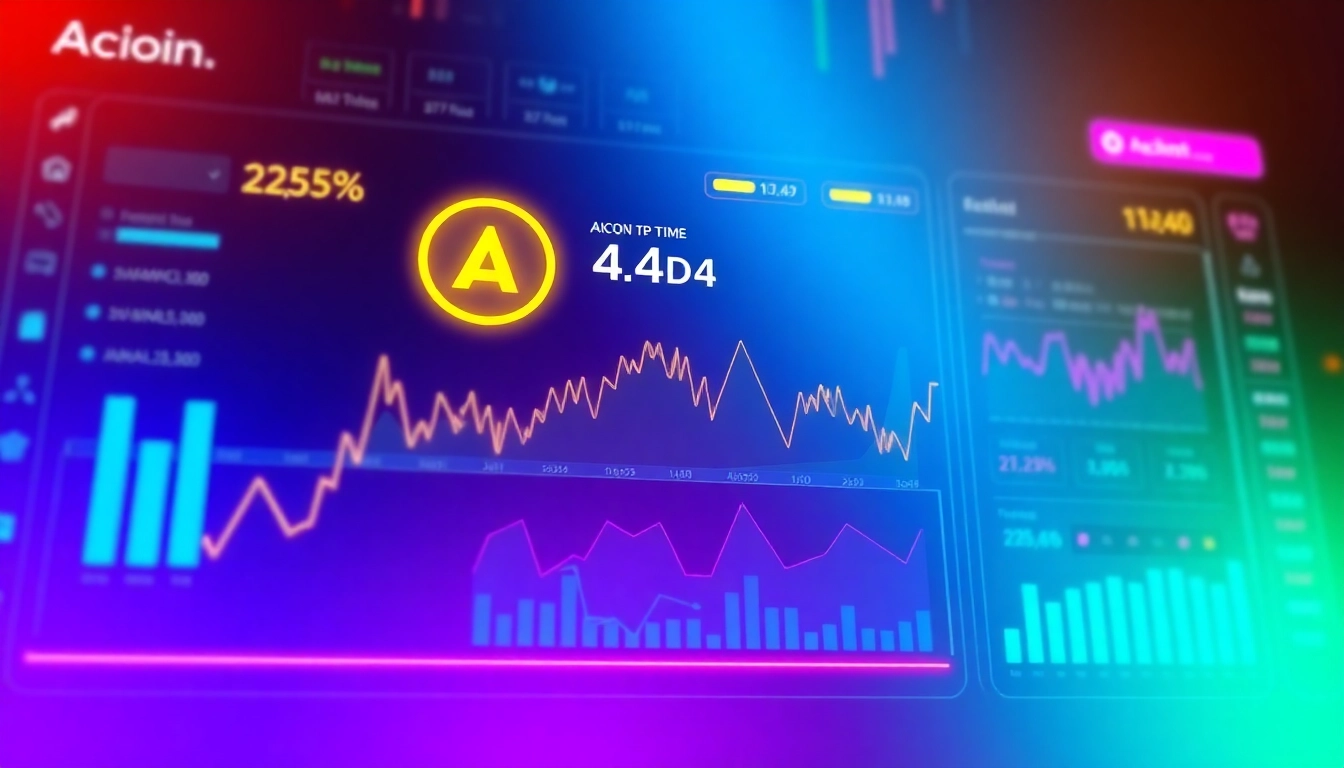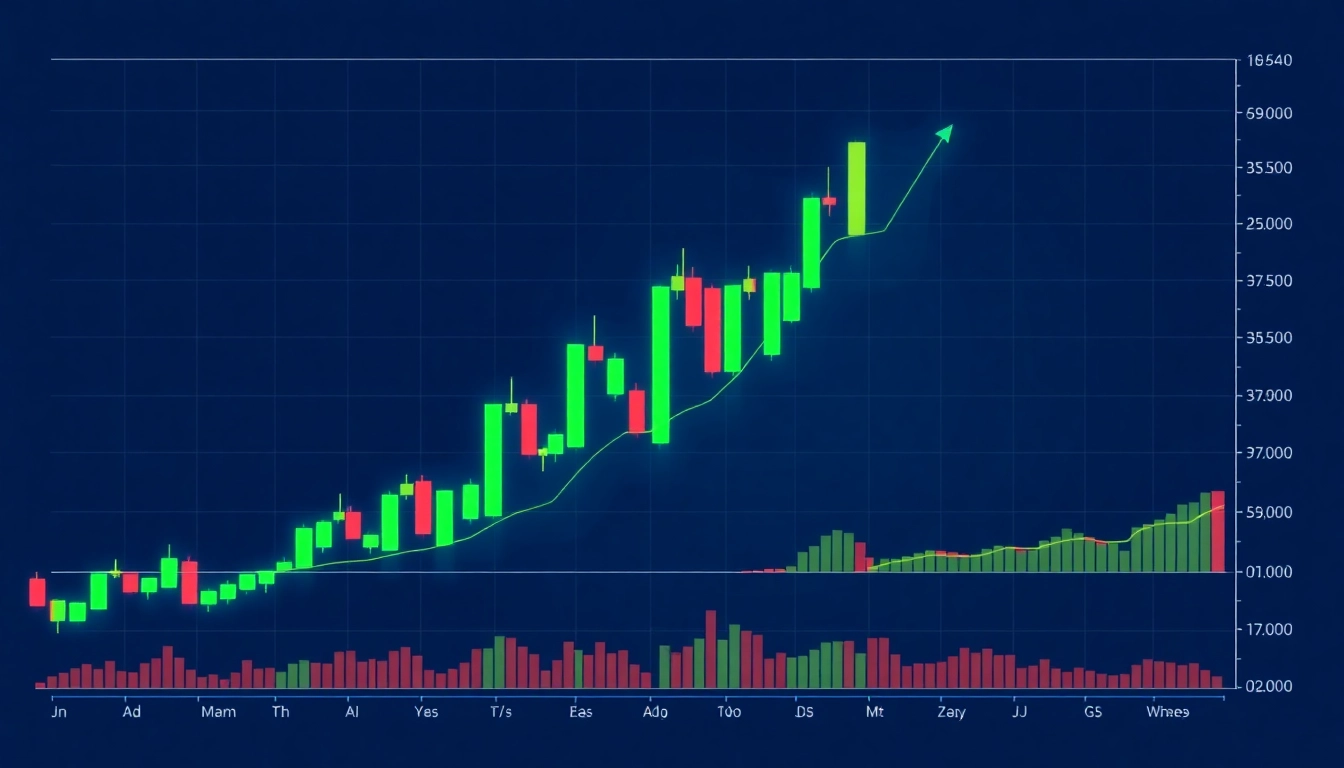Current Trends in Global Trading News and Market Overview
The global financial landscape continues to evolve rapidly, driven by a complex interplay of economic indicators, geopolitical developments, and technological advancements. Recent fluctuations across major stock markets, commodities, and cryptocurrencies highlight a cautious yet opportunistic environment for investors. Notably, Global Trading News reveals that while some sectors experience turbulence, others show resilience and growth potential, underscoring the importance of staying informed and adaptive in today’s dynamic markets.
1.1 Stock Market Performance Across Regions
Across Europe, stock indices such as the pan-European STOXX 600 closed marginally higher, supported largely by defensive sectors and selective banking stocks. In contrast, Asian markets witnessed modest gains, propelled by hopes of U.S. rate cut prospects, though China’s economic data pointed to ongoing challenges in manufacturing and consumption. Meanwhile, U.S. equities experienced a mixed bag due to geopolitical uncertainties, such as calls for Federal Reserve officials’ resignations and policy debates over interest rate adjustments.
1.2 Key Factors Influencing Market Fluctuations
Market volatility is being fueled by several key factors including inflation data, central bank policies, and geopolitical tensions. Recently, gold hit a record high of $3,501.59 an ounce, reflecting global investors’ flight to safety amid inflation concerns and US economic data influencing Federal Reserve policy outlooks. Oil prices, on the other hand, saw a slight decline but remained on course for weekly gains, demonstrating the sensitivity of commodities to supply chain cues and diplomatic developments, such as extended pauses on tariffs between China and the US.
1.3 The Impact of Geopolitical Events on Trading
Geopolitical tensions remain a significant catalyst for market shifts. For example, the US administration’s calls on Federal Reserve officials and the protests surrounding regulatory frameworks shape investor sentiment. Additionally, global capitals are watching the evolving stance of major economies regarding cryptocurrencies, with regulators considering stricter oversight, especially in relation to emerging digital assets and stablecoins. These factors collectively contribute to volatility, but also create opportunities for strategic entry points for informed traders.
2. Metals and Commodities in the Global Trading Arena
2.1 Gold Prices Hit New Records: Causes and Implications
Gold’s surge past $3,500 per ounce marks a significant milestone, driven by inflation fears, US economic uncertainty, and currency fluctuations. As the dollar weakened slightly, gold benefited from its status as a safe haven asset. This record-breaking price underscores a fundamental shift in investor behavior, emphasizing risk aversion amid volatile equity and bond markets. For traders, monitoring inflation trends and US monetary policy signals is indispensable for capitalizing on gold’s movements.
2.2 Oil Markets: Trends and Weekly Gains Analysis
Oil prices declined modestly, with Brent futures dropping 0.6% to around $68.23, yet they are set for a weekly gain owing to ongoing supply constraints and geopolitical factors. US advisories supporting extended pauses on tariffs and production agreements have contributed to these trends. Traders should focus on geopolitical developments in the Middle East, US inventory reports, and OPEC decisions, as these elements will likely influence oil trajectories in the coming months.
2.3 Iron Ore and Other Primary Commodities Overview
Weak Chinese manufacturing data caused iron ore futures to slip, highlighting the sensitivity of primary commodities to economic health indicators in major consuming countries. Iron ore prices are reflecting broader concerns about Chinese steel demand, which constitutes a significant portion of global metallurgy. Diversification strategies and supply chain analysis remain crucial for traders engaging in commodities markets.
3. Cryptocurrency Market Dynamics and Digital Currency Insights
3.1 Bitcoin, Ether, and Altcoin Performance
Bitcoin and Ether traded flat in recent sessions, with broader altcoins showing mixed performance. Bitcoin’s potential to go “full bull” hinges on the 200-week trendline stability, offering traders a technical anchor amidst fluctuating sentiment. MicroStrategy signals an upcoming bitcoin purchase spree, indicating institutional interest remains robust. Meanwhile, Coinbase’s Q2 crypto trading revenue declined amid SEC regulatory actions, exemplifying the regulatory risks impacting digital assets.
3.2 Regulatory Developments Affecting Crypto Trading
Regulatory scrutiny continues to shape crypto markets, with the SEC’s actions creating headwinds for certain exchanges and ICOs. The upcoming regulatory landscape will influence liquidity, listing, and innovation strategies. For investors, understanding jurisdictional differences and compliance requirements will be key to navigating risks and identifying emerging opportunities.
3.3 Future Trends in Digital Currency Innovation
Innovation in digital currency is accelerating, with developments like central bank digital currencies (CBDCs), decentralized finance (DeFi), and non-fungible tokens (NFTs). The NFT market, despite a recent cap drop of over $1.2 billion, continues to showcase resilience through evolving use cases and institutional interest, with a market cap exceeding $9.3 billion. This evolution indicates a maturation of digital assets as integral components of future financial ecosystems.
4. Key Financial Instruments and Investment Strategies
4.1 Trends in Stock and Equity Trading
Equity markets are experiencing a cautious rebound, driven by specific sector performances and macroeconomic cues. Defense stocks and select banking shares are leading gains, while others remain subdued amid inflation concerns. Investors are increasingly adopting strategic diversification, incorporating derivatives and options to hedge against volatility. Analyzing macroeconomic indicators like US labor data and inflation figures is vital for timing entry and exit points.
4.2 Cryptocurrency Trading Tactics and Tools
Proactive trading in cryptocurrencies involves leveraging advanced analytics, technical trend analysis, and sentiment metrics. Tools such as on-chain analytics, order book data, and AI-driven forecasting models enhance decision-making. Given regulatory uncertainties, risk management through position sizing and stop-loss orders is essential to mitigate potential downsides.
4.3 Risk Management and Performance Metrics
Effective risk management relies on setting clear performance metrics, including ROI, Sharpe ratio, and drawdown limits. Diversifying across asset classes and employing hedging strategies further stabilizes portfolios. Regularly reviewing market conditions and adjusting strategies accordingly are best practices for sustainable performance.
5. Analytical Tools, Tech, and Future Outlook in Global Trading News
5.1 Role of AI and Technology in Market Analysis
The integration of AI and machine learning into market analysis is revolutionizing trading strategies. Meta’s recent use of external AI models to enhance internal tools exemplifies how cutting-edge tech boosts predictive accuracy and operational efficiency. Automation, real-time data processing, and natural language processing are now instrumental for sophisticated traders seeking competitive advantages.
5.2 Emerging Markets and Investment Opportunities
Emerging markets such as the re-emergence of Indian and Southeast Asian assets offer high-growth potential amid geopolitical shifts. Strategic entry into commodities like rare earth metals or renewable energy stocks can diversify portfolios and capture future growth vectors. Monitoring policy reforms and infrastructure investments provides insights into these market trajectories.
5.3 Predictions and Strategic Tips for Traders
Looking ahead, traders should focus on technology-driven insights, such as AI analytics, and stay alert to macroeconomic signals like inflation rates and monetary policies. Embracing a disciplined approach to risk management, market diversification, and continuous learning will be essential to capitalize on emerging opportunities and mitigate risks in volatile times.



